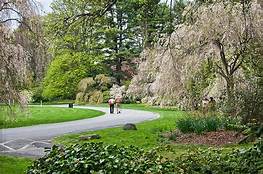Photo Credit - discoverphilippines.com
The Philippines is a country full of legends. Filipinos love legends and myths and they believe in superstitions. The legend of the sea and the sky (posted on Sept 2, 2017) is one of them. In truth, there were only the huge body of water, the mighty ocean which would later be called the Pacific Ocean and the encompassing sky above it in the beginning. At that time, the Philippine tectonic plate sat squeezed between the vast Pacific and Asiatic plates.
Geologically speaking, the Philippine archipelago was formed by volcanic eruptions from under the sea and the buckling of the earth’s crust when two tectonic plates collided about 65 million years ago. When the world’s largest and much heavier Pacific Plate moved under the smaller Philippine Plate, the Philippine Plate buckled under the tectonic pressure pushing land masses. Northern Luzon sat on the western edge of the Philippine Plate, while the remaining islands rested on the eastern edge of the Asiatic Plate. The southward movement of the Asian landmass formed the shallow China Sea and crumpled the edge of the continental shelf. The crests of the folds produced in the submerged ridge created the elongated mountain ranges of the Northern Philippine islands. Fissures formed and from the bottom of the immense ancient ocean, a vast amount of trapped molten material deep in the earth spewed up in horrendous volcanic eruptions. Continuous volcanic activities pushed up and spewed forth billions of cubic meters of ash and molten lava adding their enormous debris across the landscape. Islands were formed and the Philippine archipelago was born.
A number of the archipelago’s islands continued to grow and rose up from the depths of the ocean floor. Monsoonal climates with noticeable summer rainfall peaked and winter dry seasons occurred. Winds tore down at mountain ranges and ocean storms ripped at tiny islands on every side by huge waves. The islands were periodically subjected to strong typhoons, devastating floods and volcanic eruptions. Strong earthquakes have also occurred periodically. These climatic occurrences happened constantly for centuries before human’s discovery of the islands. All these elements and the ongoing erosion contributed to the shaping and reshaping of the Philippine archipelago. Luzon was torn away from Taiwan, the Visayas from Luzon, Mindanao from the Visayas, Borneo from Mindanao and the Sulu Archipelago from Mindanao and Borneo.
A narrow belt running southeast from Zambales Province to Legaspi in Albay Province roughly follows the boundary between the two plates. This belt contains the most vigorous of the Philippines’ two dozen active volcanoes, including Mt. Pinatubo in Tarlac, Taal Volcano in Batangas, Mt. Banahaw in Quezon, and Mayon Volcano in Albay. Mayon Volcano is the most beautiful of them all and recognized as the most perfectly-formed volcanic cone in the world rising to a height of 9,000 feet above the Albay Gulf.
The Philippine lies on the volatile Pacific “Ring of Fire” and most of the highest mountains are volcanic in origin. There are about 50 volcanoes scattered about the archipelago, 22 of which are still active. These volcanoes can at times erupt with great explosive force, spreading ash and devastation for miles and miles around. Taal Volcano, the lowest volcano in the world, erupted for 200 days from May 15 to December 1, 1754, its greatest recorded eruption. Mt. Pinatubo, about 100 kilometers northwest of Manila, angrily woke up from its 600-year slumber on June 12, 1991 and earned the reputation as the most devastating volcanic eruption of the 20th century, killing more than 1,000 people and raining volcanic ash everywhere nearby. Mayon in southern Luzon has erupted 47 times since 1616. The deadliest, in 1814, killed more than 1200 people and partly destroyed the Cagsawa Church and buried a village. The most recent deadly event was a two-month long eruption in Feb. 1993 sending volcanic debris five kilometers into the air and killing 70 people including a group of volcanologists. On Jan. 22, 2018, the Mayon Volcano was placed under Alert Level 4 after it spewed a giant ash column and extended the coverage of the danger zone around the volcano to 8 kilometers from the crater.
However, these eruptions bring great soil fertility to the area. Over 10,000 species of plants grow in the Philippines with over 1,000 orchid species, many are found nowhere else in the world.
Until next time. The Story of the Philippines will continue . . .
Rosalinda
 Planting Fields State Park
Planting Fields State Park





.jpg)
.jpg)